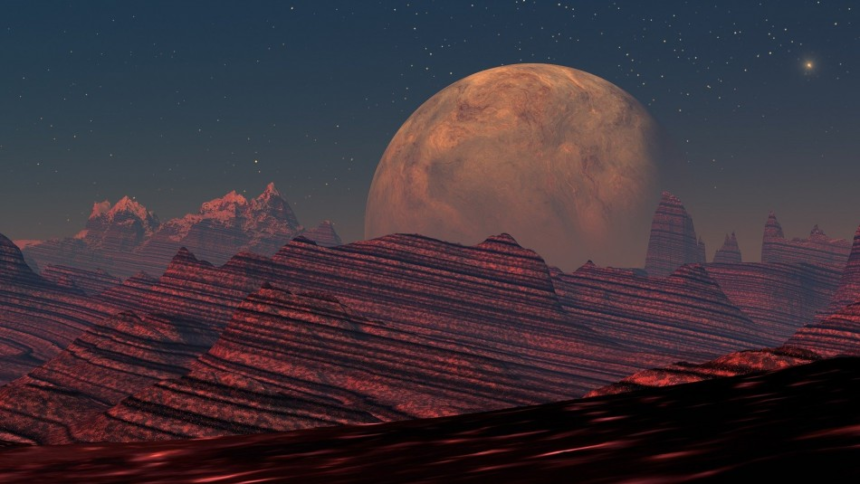Curiosity Rover Captures Stunning Images as It Ascends Martian Foothills

NASA’s Curiosity rover continues to captivate the world with its remarkable discoveries and breathtaking imagery from the red planet. In its latest triumph, the rover has shared a spectacular panoramic postcard featuring both morning and afternoon views of Mars. Released by NASA on April 8, 2023, these images provide a unique glimpse into the Martian landscape as the rover ascended the foothills of a towering 3-mile-high mountain within the Gale Crater.
To capture this awe-inspiring vista, Curiosity utilized its black-and-white navigation cameras, taking two series of five individual images over a span of 7 1/2 minutes. The first series was captured at 9:20 am local Mars time, while the second series was taken at 3:40 pm. This strategic timing allows for a distinct comparison of the Martian terrain under different lighting conditions.
NASA engineer Doug Ellison from the Jet Propulsion Laboratory in Southern California played a crucial role in planning and processing these images. Ellison drew a parallel between the Martian scenery and the varied landscapes experienced at different times of the day in national parks on Earth. By capturing images during morning and afternoon, Curiosity’s cameras revealed dramatic variations in lighting and shadow patterns, reminiscent of a stage setting.
Ellison explained, “Capturing two times of day provides dark shadows because the lighting is coming in from the left and the right like you might have on a stage – but instead of stage lights, we’re relying on the Sun.” The winter season at Curiosity’s location contributed to the enhanced depth of the shadows due to lower airborne dust. It is worth noting that Mars’ shadows appear sharper and deeper in periods of low dust and softer when dust levels are high.
Within the panoramic image, viewers are treated to a unique perspective as they peer past the rear of the rover. The rover’s three antennas and a nuclear power source come into view, showcasing the advanced technology that enables Curiosity’s exploration on Mars. In the lower right corner, a white circle represents the Radiation Assessment Detector (RAD) instrument. RAD plays a vital role in helping scientists understand the radiation levels on Mars, crucial information for safeguarding future astronauts who will journey to the red planet.
The panoramic postcard is a testament to the engineering marvel that is Curiosity, highlighting its ability to provide unprecedented views of the Martian landscape. Each image captured by the rover serves as a reminder of the vast scientific knowledge waiting to be unlocked on Mars.
As Curiosity continues its mission, NASA and the scientific community eagerly anticipate further revelations and astonishing imagery from the red planet. These visual marvels bring us one step closer to understanding Mars’ secrets and pave the way for future human exploration of our neighboring world.
In the words of Doug Ellison, “Mars is a captivating planet that never ceases to amaze us. These images transport us to another world and ignite our curiosity about the mysteries it holds.”
As we await the next chapter in Curiosity’s journey, the captivating panorama serves as a poignant reminder of humanity’s unquenchable thirst for discovery and our relentless pursuit of knowledge, no matter how far away it may lie.






